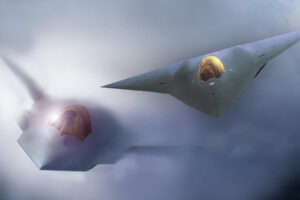An ancient sword unearthed in Germany was found “still gleaming” at the time of discovery despite its 3000 years of age.
The unusually well-preserved item was discovered last week by a team of archaeologists in the town of Nördlingen, during excavations in the Donau-Ries region in Bavaria, southeastern Germany.
Ancient sword discovery dated to the Bronze Age
Experts say that the extraorinary find belongs to the octagonal sword type, and is believed to date to the end of the 14th century BC – the time of the Middle Bronze Age.
“Sword finds from this period are rare and come either from burial mounds that were deliberately opened in the 19th century or as single, presumed sacrificial finds,” according to the announcement by Bavaria’s State Office for Monument Protection (BLfD).
In this particular case, the sword was discovered in a grave besides the remains of three people – a man, a woman and a child – who had been buried with rich bronze gifts and in quick succession, archaeologists said.
It is not yet clear whether the persons were related to each other and in what way.
“The sword and the burial still have to be examined so that our archaeologists can classify this find more precisely. But it can already be said: the condition is exceptional! A find like this is very rare,” explains general conservator Prof. Mathias Pfeil, head of the Bavarian State Office for the Preservation of Monuments.
Craftmanship of ancient octagonal swords
Octagonal swords are acclaimed for their craftmanship. Their production is complex because the handle is cast over the blade, a technique called overlay casting, BLfD explains.
“The decoration is made with an inlay and using hallmarks. While there are two real rivets, another pair of rivets are only implied,” it adds.
“Despite the manufacturing effort and the lack of signs of a blow, it can be assumed that it was a real weapon. The center of gravity in the front part of the blade indicates a predominantly slashing balance.”
Archaeological finds and research suggest that were two separate main areas of distribution for the octagonal swords: on the one hand, southern Germany and, on the other hand, northern Germany and Denmark.
A comparison of the casting techniques and the decoration shows that some of the octagonal swords in the North are apparently replicas of South German forms, while other pieces could be genuine imports or the product of “wandering craftsmen,” the BLfD concludes.
Source : Greek Reporter









